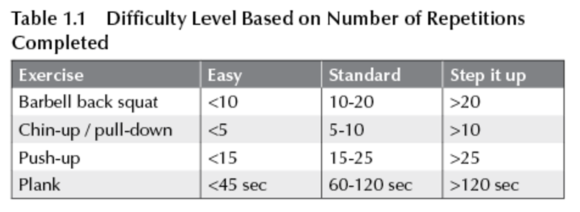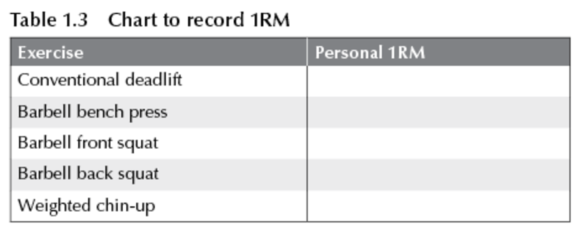An Introduction to Intensity
This is an excerpt from High-Intensity 300 by Dan Trink.
As I mentioned in the introduction, this book is not meant to be a review of research studies on the benefits of high-intensity training (HIT). I want you to jump in, start training, and get the results you are looking for. However, it's always good to understand the thinking and mechanisms behind any training plan you engage in. First, getting insight into the thought process behind the workout plan is a great way to gauge whether this is the right training program for your goals.
Second, when you are in the middle of a tough set, your lungs burning, sweat pouring off your forehead, and having that occasional what have I gotten myself into moment of self-doubt, you will, in the back of your mind, have an understanding of why you are doing what you are doing and why it is so effective. This should serve as motivation to keep on going. Now let's get into the three big concepts that make up the rationale behind high-intensity workouts.
What Is Intensity?
Most people think of intensity in the gym setting as the amount of effort you are putting into a workout. A slow walk on the treadmill while reading the morning paper is a low-intensity workout, while an all-out, sweat-pouring-off-your-forehead, heart-about-to-jump-out-of-your-chest circuit is high intensity. This is intensity of effort, the type of intensity you should be focusing on when completing chapters such as 40 Toughest Workouts, Last (Wo)Man Standing, and Ultimate Fat Loss. But intensity of effort is only one of the definitions of intensity that will be used in this book.
When it comes to official training lingo, intensity represents a specific percentage of your 1-repetition maximum (the maximum amount of weight you can lift for exactly 1 rep, or 1RM), or how much weight is on the bar relative to how much weight you can actually use if you were going all out. This becomes critical when trying to build strength during the workouts in the chapter Getting Stronger. Finally, there is muscular intensity, or how much localized muscle fatigue you are incurring during your workout. A workout that blasts your biceps with several back-to-back exercises as you might find in Targeted Muscle Builders would fall into this category.
So, let's review. Intensity of effort is how hard you perceive yourself to be working, intensity of load is how much weight you are lifting relative to the maximum you are capable of lifting (e.g., 85 percent of your 1RM), and muscular intensity involves repeatedly working a specific muscle to a level of exhaustion. It is important to get a grasp of what type of intensity you are trying to focus on during any given workout.
The Science Behind High-Intensity Training
Along with the performance and aesthetic benefits that people gain from high-intensity training come the scientifically researched mechanisms that cause these desired adaptations. And although the science can get complicated and expansive, it is worth understanding some key concepts and mechanisms behind why HIT is so effective. Following are three key principles as to why HIT is an efficient and results-driven approach to training.
Concept 1: EPOC
The biggest concept to wrap your head around when it comes to the benefits of high-intensity training is something called excessive postexercise oxygen consumption (EPOC). After either resistance training or cardiorespiratory training (or a combination of both), the body continues to need oxygen at a higher rate than before exercise began. This occurs so the body can get back to homeostasis, or its typical resting metabolic rate. Repaying the oxygen debt caused by training requires additional energy expenditure. What this means, in a nutshell, is that you will continue to utilize energy (in the form of burning calories) well after your exercise session is over. High-intensity workouts drive up the effect of EPOC even more because you create a larger oxygen deficiency during the intensified effort of this type of training.
The bottom line? The greater the intensity of the workout, the greater the EPOC and, therefore, the greater the energy expenditure (calories burned) both during and after the workout. This afterburn can last for 36 hours postworkout, so don't underestimate just how powerful it is. Now, not every workout here tries to cash in on the EPOC effect. Many workouts focus more on building strength or gaining muscle mass - which leads perfectly into our next concept.
Concept 2: Building and Maintaining Lean Mass
In all the workouts that follow, there is a component of resistance - whether it's barbells, kettlebells, dumbbells, machines, or even body weight. The prevailing thought used to be that if you wanted fat loss, the majority of your training had to be centered around traditional long, slow cardiorespiratory activities such as jogging or cycling. And although those activities still have some value when looking for fat loss, they pale in comparison to resistance training. Why? Because resistance training builds lean muscle tissue. Lean muscle helps you gain strength, of course, but it is also metabolically active, and it takes a lot of energy to maintain muscle and keep it functioning. So, essentially, the more muscle mass you have, the more calories you can consume without gaining additional body fat.
Concept 3: Exercise Density
Density is simply the amount of work you perform in a given amount of time - in this case, 30 minutes or less in each workout. By packing more work into a shorter amount of time you drive up your work capacity, which is critical for cardiorespiratory health and sports performance. (Ever notice that it is the athlete who can give the greatest effort in the fourth quarter or final round that is usually the most successful?) These workouts are truly the ultimate in exercise efficiency, getting the most work done, in the least amount of time, while delivering optimal body composition and performance results.
Assessing Your Fitness
It's difficult to know where you are going if you have no idea where you have been. Yet so many people begin training programs without any type of self-assessment (maybe with the exception of jumping on the scale) as a baseline by which to judge future progress. You are not going to make that mistake. Following are two basic benchmark workouts. One will measure the total number of reps you can perform of several movements. The other will test the time it takes to get through an exercise circuit. Be sure to record your results so you can reassess these in the future.
Benchmark Workout 1
Complete one set of the maximum number of repetitions for each movement. Rest 3 to 5 minutes between each movement. The number after each exercise indicates the workout number where the exercise is featured with detailed instructions.
- Barbell back squat (#63) with 50 percent of your body weight.
- Kneeling lat pull-down (beginner) (#120) with 50 percent of your body weight/chin-up (intermediate or advanced) (#73)
- Incline push-up (beginner) (#115)/push-up (intermediate or advanced) (#12)
- Plank (figure 1.8) to be held for the maximum amount of time

Table 1.1 should be used as a guide to evaluate your appropriate difficulty levels for workouts. If you can only perform fewer than 10 reps of the barbell back squat, fewer than 5 reps of the chin-ups or pull-downs, fewer than 15 reps of the push-ups, and less than 45 seconds of the plank, you should opt for the easy variation found at the end of each workout. There is no shame in having to start with the easy variation, and with some consistent training you will be able to move to the standard workouts in no time.
If you can perform between 10 and 20 reps of the squat, 5 and 10 reps of the chin-ups or pull-downs, 15 and 25 reps of the push-ups, and 46 seconds and 2 minutes of the plank, you should be attempting the standard versions of the workouts.
If you are exceeding all the rep ranges (20+ squats, 10+ chins-ups or pull-downs, 25+ push-ups, 2 minute+ plank), then feel free to attempt the suggestions for stepping it up to make the workouts more challenging and intense.
What happens if you can do certain exercises at one level and other exercises at a different level? The goal of High-Intensity 300 is to provide workouts that are customizable to your fitness levels and goals while giving you a training challenge. So use the highest intensity you can manage for any exercise. Just note which level you were able to achieve, and when a comparable exercise comes up in the training program, use the intensity that is appropriate. However, if you are on the fence about which intensity to use, start with something a bit easier. You will get more benefit out of performing your workouts with great technique and a lighter load than adding more weight to the bar and using bad form. Remember, training is a lifelong endeavor. There is no need to rush into adding more load than you can handle.
Benchmark Workout 2
Complete all repetitions of all three exercises in the shortest amount of time possible. Like before, the number after the exercise indicates the workout where it's featured.
- 30 prisoner squats (#188)
- 20 incline push-ups (beginner) (#115)/20 push-ups (intermediate or advanced) (#12)
- 20 kneeling lat pull-downs (beginner) (#120) with 50 percent of body weight/10 pull-ups (intermediate or advanced) (#231)
Use table 1.2 as a guide to determine appropriate difficulty level. If your total time is under 2:30 for all three exercises, you can consider utilizing the step-it-up option. If your time is between 2:30 and 5 minutes, the standard workouts should be appropriate for you. If your time is more than 5 minutes or you cannot complete the workout, I would recommend sticking with the easy option for now.

Retest both benchmark workouts every two months and record your results. If your results shift from one category to the next (e.g., you performed the second benchmark workout in 5:25 two months ago and you finished in 4:45 upon retesting), feel free to attempt the more challenging workout for the remainder of the program.
Finally, several of the workouts recommend using loads that are a percentage of your 1RM of a specific movement. Therefore, it would be beneficial to test or at least have a solid idea of your 1RM in the conventional deadlift, barbell bench press, barbell front squat, barbell back squat, and weighted chin-up before you start tackling these workouts. Table 1.3 can be used to keep track of your 1RM for these exercises.

Ramping Up to Daily Workouts
Here's the thing about high-intensity training - it's intense. Many trainees are susceptible to injury because although they have a lot of motivation and energy to begin a really challenging training program, their bodies just aren't ready for that type of effort. What follows are some basic rules and parameters you should remember when performing HIT (or, frankly, any workout program).
We also discuss the basic movement patterns - what they are and how to perform them correctly - as well as the thought process behind the easy and step-it-up options you will find at the end of each workout.
Learn more about High-Intensity 300.
More Excerpts From High-Intensity 300SHOP

Get the latest insights with regular newsletters, plus periodic product information and special insider offers.
JOIN NOW


